Male body
The male body is a complex structure composed of various systems and components that work together to maintain health and functionality. Understanding the anatomy of the male body can provide insights into its functions, health considerations, and physical fitness.

Major Components of Male Anatomy
1. Skeletal System
The skeletal system provides structure to the male body, protects vital organs, and facilitates movement through joints. It consists of:
- Skull: Protects the brain.
- Spine: Supports the upper body and houses the spinal cord.
- Rib Cage: Protects the heart and lungs.
- Limbs: Arms and legs that allow for mobility.
2. Muscular System
The muscular system enables movement through contraction and relaxation of muscles. Key muscle groups include:
- Upper Body Muscles: Such as pectorals (chest), deltoids (shoulders), biceps, triceps, and back muscles (trapezius, lats).
- Core Muscles: Including rectus abdominis (abs) and obliques that stabilize the torso.
- Lower Body Muscles: Such as quadriceps, hamstrings, glutes, and calves which are crucial for locomotion.
3. Reproductive System
The male reproductive system is responsible for producing sperm and hormones like testosterone. Key components include:
- Testes: Produce sperm and testosterone.
- Scrotum: Holds the testes outside the body to maintain optimal temperature for sperm production.
- Vas Deferens: Transports sperm from the epididymis to the urethra.
- Prostate Gland & Seminal Vesicles: Contribute fluids to semen.
4. Circulatory System
The circulatory system includes:
- Heart: Pumps blood throughout the body.
- Blood Vessels: Arteries carry oxygen-rich blood away from the heart; veins return deoxygenated blood back.
5. Nervous System
The nervous system controls bodily functions through signals sent between different parts of the body:
- Central Nervous System (CNS): Comprises the brain and spinal cord.
- Peripheral Nervous System (PNS): Includes all other neural elements.
6. Endocrine System
This system regulates hormones that control various functions including metabolism, growth, mood, and sexual function:
- Testosterone Production: Primarily occurs in testes but also in adrenal glands.
Importance of Understanding Male Anatomy
Understanding male anatomy is crucial for several reasons:
- Health Awareness: Knowledge about one’s own body can lead to better health choices and awareness of potential issues such as hormonal imbalances or reproductive health concerns.
- Fitness Goals: Recognizing muscle groups helps in designing effective workout programs tailored to individual fitness goals.
- Injury Prevention: Awareness of anatomical structures aids in understanding how injuries occur and how they can be prevented during physical activities.
Conclusion
In summary, a comprehensive understanding of male anatomy encompasses various systems including skeletal, muscular, reproductive, circulatory, nervous, and endocrine systems. This knowledge is essential not only for personal health management but also for optimizing physical performance through targeted training regimens.
Male body parts name
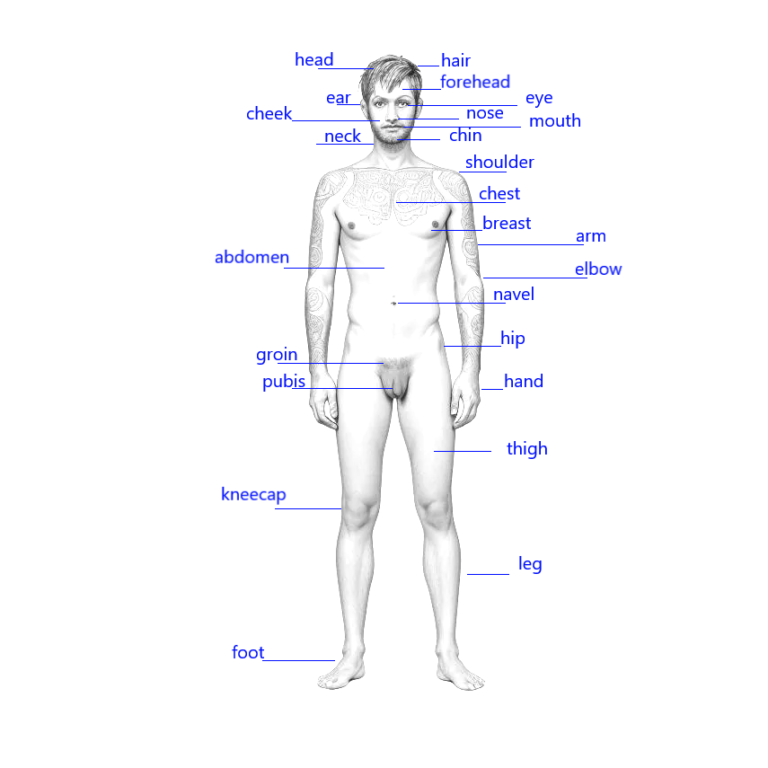
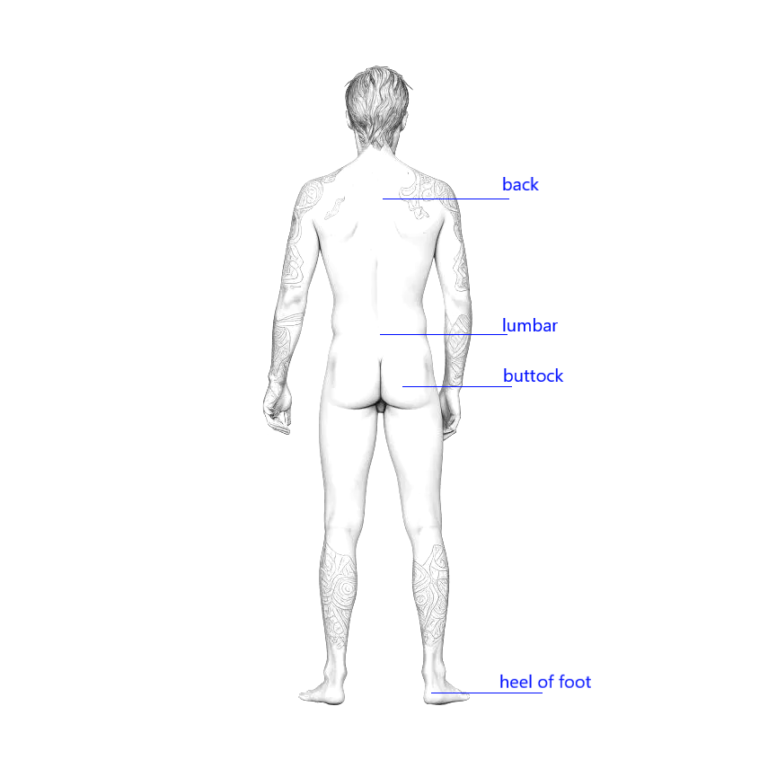
Anatomy of the Human Penis
The human penis is a complex organ that serves multiple functions, primarily in the male reproductive and urinary systems. It consists of several anatomical structures, each contributing to its overall function.
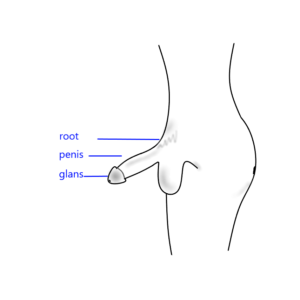
Main Parts of the Penis
The penis can be divided into three main parts:
- Root (Radix): This is the fixed part of the penis that is located within the pelvic cavity. It includes:
- The bulb of the penis, which is part of the corpus spongiosum.
- The crura (plural of crus), which are extensions of the corpora cavernosa that attach to the ischiopubic rami.
- Body (Shaft): This is the elongated portion between the root and glans. It contains:
- Two corpora cavernosa: These are cylindrical structures that run along the dorsal side of the penis and are responsible for erection.
- One corpus spongiosum: This structure runs along the ventral side and surrounds the urethra, preventing it from collapsing during erection.
- Glans: The distal end of the penis, which is conical in shape and formed by an expansion of the corpus spongiosum. The glans contains:
- The external urethral orifice, where urine and semen exit.
- The foreskin (prepuce), which covers and protects the glans.
Erectile Tissue
The erectile tissue within the penis plays a crucial role in sexual function:
- Corpora Cavernosa: These two columns fill with blood during arousal, leading to an erection. They are surrounded by a fibrous sheath called tunica albuginea.
- Corpus Spongiosum: This structure also contains erectile tissue but remains softer than the corpora cavernosa during erection to allow for urethral patency.
Blood Supply
The arterial supply to the penis comes from branches of the internal pudendal artery:
- Deep Arteries: Supply blood directly to the corpora cavernosa.
- Dorsal Artery: Supplies blood to superficial structures including skin and glans.
- Bulbourethral Artery: Supplies blood to the bulb and urethra.
Venous drainage occurs through three systems:
- Superficial veins drain skin and superficial tissues.
- Intermediate veins drain deeper structures into prostatic venous plexus.
- Deep veins drain erectile tissues back into systemic circulation.
Innervation
The penis receives sensory innervation primarily from:
- Dorsal Nerve: A branch of the pudendal nerve that provides sensation to most areas including glans.
- Cavernous Nerves: Responsible for autonomic control over erection; they originate from pelvic plexus.
Functions of human Penis
The primary functions of the human penis include:
- Sexual Intercourse: Facilitates penetration during sexual activity through erection achieved via increased blood flow into erectile tissues.
- Ejaculation: During orgasm, semen containing sperm is expelled through rhythmic contractions involving various muscles around urethra.
- Urination: Acts as a conduit for urine to exit from bladder via urethra.
Erection Process of Penis
An erection occurs when sexual arousal leads to dilation of arteries supplying blood to erectile tissues:
- Increased blood flow fills corpora cavernosa, causing them to expand and compress surrounding veins, thus trapping blood within these spaces.
- This results in rigidity necessary for penetration during intercourse.
Ejaculation Process
Ejaculation involves two phases:
- Emission Phase: Seminal fluid accumulates in proximal urethra due to contractions in seminal vesicles and prostate gland under sympathetic nervous control.
- Expulsion Phase: Rhythmic contractions expel semen through urethra facilitated by bulbospongiosus muscle contraction.
Conclusion
In summary, the human penis is a multifaceted organ composed of various structures that enable it to perform essential functions related to reproduction and urination, including sexual intercourse through its ability to achieve erections and facilitate ejaculation while also serving as a passageway for urine.
Size of human penis
The size of the human penis can vary widely among individuals. However, studies have provided some average measurements:
Flaccid Length : The average flaccid penis size is approximately 9.16 cm (3.61 inches).
Erect Length : The average erect penis size is about 13.12 cm (5.17 inches).
Girth : The average girth (circumference) of an erect penis is around 11.66 cm (4.59 inches).
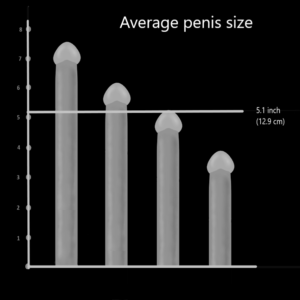
How to measure the size of a human penis?
Measuring the size of a human penis can be done using a few simple steps. Here’s a guide on how to do it accurately:
First ensure that the person is comfortable and relaxed. It’s best to measure when the penis is erect for consistency.
Length Measurement :
Place the ruler or measuring tape at the base of the penis, where it meets the pubic bone.
Extend it along the top side of the penis to the tip of the glans (the head).
Record the measurement in centimeters or inches.
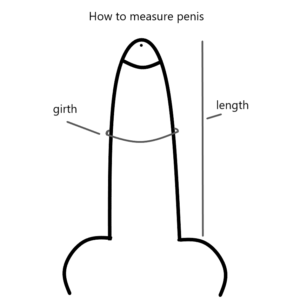
Girth Measurement :
Use a measuring tape or a piece of string.
Wrap it around the thickest part of the shaft of the penis.
If using string, mark where it overlaps, then measure the length of the string with a ruler.
Record the measurement.
Tips
Ensure that the measuring tool is straight and not angled for accurate measurements.
It may be helpful to take multiple measurements and average them for a more accurate result.
Measuring in a private and comfortable setting can help reduce anxiety and ensure more accurate results.
Penis size varies widely among individuals, and there is no “normal” size. It’s essential to approach this topic with sensitivity and understanding.
- FAQ
What is the average size of a human penis?
The average erect penis size is approximately 5 to 7 inches in length, with a circumference of about 4 to 5 inches.
How does a penis become erect?
An erection occurs when blood fills the corpora cavernosa, two cylindrical structures in the penis, causing it to enlarge and become firm. This process is typically triggered by sexual arousal or stimulation.
Is it normal for a penis to have a curve?
Yes, it is normal for a penis to have a slight curve. A curvature of up to 30 degrees is generally considered healthy unless it causes pain or discomfort during sexual activity.
What causes premature ejaculation?
Premature ejaculation can be caused by psychological factors such as anxiety or stress, as well as physiological factors like heightened sensitivity or hormonal imbalances.
How often do men typically experience erections during sleep?
Most men experience three to five erections during REM sleep each night, which is known as nocturnal penile tumescence.
Does circumcision affect sensitivity in the penis?
Circumcision may reduce sensitivity for some men due to the removal of sensitive foreskin tissue; however, many men report no significant difference in sexual pleasure after circumcision.
Can lifestyle choices impact erectile function?
Yes, lifestyle choices such as smoking, excessive alcohol consumption, poor diet, and lack of exercise can negatively affect erectile function and overall sexual health.
Is it possible for a man to break his penis?
While there are no bones in the penis, it can sustain an injury known as penile fracture if there is trauma during an erection; this requires immediate medical attention for proper treatment and recovery.
Does penis size affect sexual satisfaction?
Penis size does not significantly impact sexual satisfaction; emotional connection and technique are often more important factors in sexual pleasure for both partners.
Are there any methods to increase penis size that are proven effective?
Surgical options can provide permanent increases in size, but non-surgical methods like pills or pumps generally do not have scientifically proven effectiveness and may carry risks.
What percentage of men are dissatisfied with their penis size?
Approximately 45% of men report dissatisfaction with their penis size, which can affect their self-esteem and confidence levels.
How does weight affect perceived penis size?
Weight loss can make the penis appear larger by reducing fat around the pubic area, which may obscure part of the shaft when excess fat is present.
What should a man do if he feels insecure about his penis size?
If a man feels insecure about his penis size, it may be beneficial to speak with a healthcare professional or therapist who specializes in body image issues to address these feelings constructively.
Do women have specific preferences regarding penis size?
Research indicates that women prefer slightly larger than average sizes for one-time partners but generally prioritize other factors such as emotional connection and compatibility over sheer size in long-term relationships.
Can surgical procedures guarantee satisfaction with increased penis size?
While surgical procedures can result in increased length or girth, they come with risks such as complications or dissatisfaction with results; counseling before surgery is often recommended to manage expectations effectively.
Do women generally care about penis size?
Yes, many women do have preferences regarding penis size, but the importance varies among individuals.
Is girth more important than length for most women?
Many studies suggest that girth is often considered more important than length when it comes to sexual satisfaction.
How does penis size affect sexual pleasure for women?
Penis size can influence sexual pleasure, as a larger girth may provide better stimulation of sensitive areas within the vagina, but individual experiences vary widely.
Are there any specific sizes that are commonly preferred by women?
While preferences can vary, studies show that many women find a penis length of around 6 to 7 inches and a circumference of about 4.5 to 5 inches to be ideal for their comfort and pleasure.
Can a smaller penis still provide satisfaction during sex?
Yes, many women report being satisfied with smaller penises if their partners are skilled in other aspects of sexual intimacy, such as foreplay and emotional connection.
How does confidence relate to perceptions of penis size?
Confidence can significantly impact how a woman perceives her partner’s penis size; men who are confident tend to be more attractive regardless of their actual size.
Are there psychological factors influencing women’s preferences for penis size?
Yes, societal norms and media portrayals can create unrealistic expectations regarding penis size, which may affect individual preferences and self-esteem in both men and women.
importance of penis size in relationships
while some women have preferences regarding penis size, factors such as emotional connection, technique, and mutual satisfaction play a much more significant role in sexual relationships than size alone does.